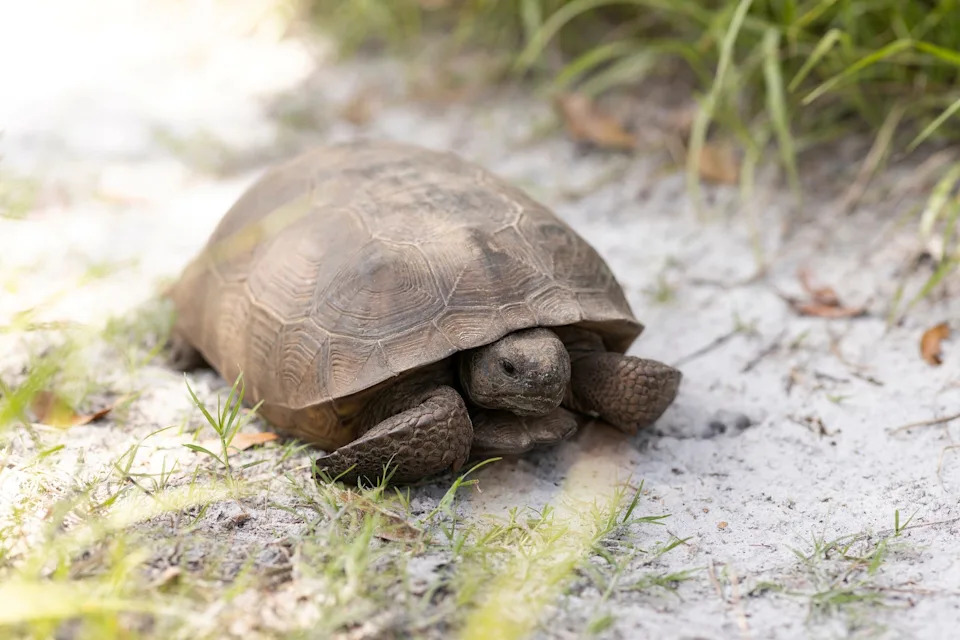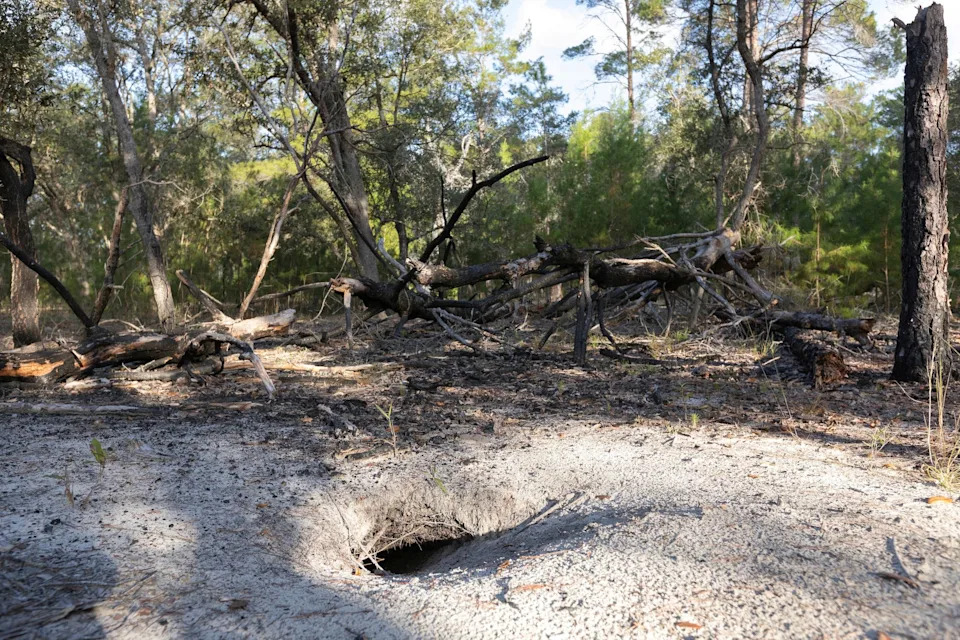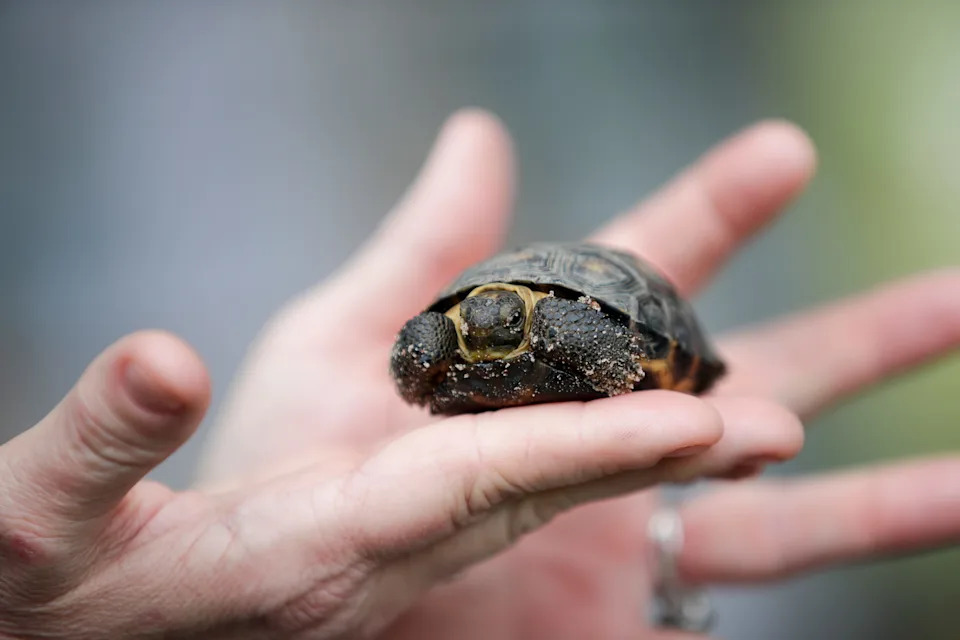Boasting more than 80 distinct ecosystems, Florida is a biodiversity hot spot. In fact, more than 4,000 animal species are native to the Sunshine State.
In the heat of summer, a growing number of species are on the move, meaning more interactions with humans. Through the University of Florida’s “Critter of the Month” series, we’re highlighting native animals that wildlife watchers are likely to encounter and providing bite-sized guides to their behavior.
Katie Mastenbrook is a Florida Sea Grant agent for UF’s Institute of Food and Agricultural Sciences (UF/IFAS) Extension Pinellas County. She’s based at Weedon Island Preserve, a well-known gopher tortoise habitat. Below, Mastenbrook provides some insight into the species, which originated about 60 million years ago.
Gophers in the summertime

Q. What are gopher tortoises up to this time of year?
A. Gopher tortoises tend to be solitary animals, but during the summer, they socialize because it’s mating season. Males can be territorial and engage in shoving matches. Females may lay eggs or have just created a fresh nest, and eggs may hatch. Mothers typically dig their nests near the entrance of their burrow, a spot called the apron. Otherwise, typical activity for both genders involves foraging in the mornings and evenings, when it’s cooler, and sunbathing in the afternoons, when it’s warmer. We’re also likely to see them burrowing or deepening burrows to escape the heat.
Life cycle of a tortoise
Q. How would you characterize the gopher tortoise life cycle?
A. Gopher tortoise eggs will typically hatch between 80 and 100 days after being laid. Just like marine turtles, gopher tortoise parents do not provide parental care for their nest or young, and hatchlings fend for themselves. They don’t reach sexual maturity until they are between 10 and 25 years old, with the rate dependent on the sex of the tortoise, food availability and environmental conditions; females typically reach sexual maturity later than males. In the wild, gopher tortoises live between 40 and 60 years, but they are known to live significantly longer in captivity.

Herbaceous diet
Q. What do gopher tortoises eat?
A. Gopher tortoises are herbivores, and they typically eat a variety of low-growing plants, including grasses. On Weedon Island Preserve, we’ve seen them munch on prickly pear cactuses, sensitive briar, milk pea, silkgrass, blue-eyed grasses, groundcherries and cutleaf evening primrose. Through their herbaceous diet, gopher tortoises play an important role as seed dispersers, and their digging behavior helps aerate soil, improving conditions for plant seeds to root.
Engineering marvels
Q. Gopher tortoises are well known for their burrows. What’s special about these earthen homes?
A. Burrows are engineering marvels that can reach up to 40 feet in length and up to 10 feet in depth. They provide a stable habitat for gopher tortoises by maintaining a more consistent temperature and humidity year round. They offer protection from wildfires and other environmental factors like predators. Sometimes, gopher tortoises will dig several burrows within their territory, a foraging area that ranges in size from 1 to 4 acres.

A threatened keystone species
Q. Gopher tortoises are considered a threatened species. Why is it important to protect them?
A. Gopher tortoise burrows — in addition to providing shelter for tortoises – provide homes to more than 350 different species. This makes the gopher tortoise a keystone species, or an organism that supports an entire ecosystem. By protecting gopher tortoises, we are protecting these other animals, some of which are endangered or threatened, like the Eastern indigo snake and gopher frogs. We are also protecting the surrounding natural spaces and larger parcels of land, parts of which can be used for recreation.
How to protect gophers
Q. What should people keep in mind when interacting with gopher tortoises?
A. Gopher tortoises are land animals and are unable to swim, so do not put them in saltwater or freshwater. They get all the water they need through the food they eat and the rain puddles they encounter in their habitat.
Do not disturb gopher tortoise burrows. Digging, filling or walking near burrows can harm tortoises and other species inside. Instead, enjoy gopher tortoises from a safe distance and observe them foraging or digging.
If walking near a gopher tortoise habitat, keep pets on a leash and close by. Dogs especially have been known to destroy burrows or chase after tortoises when they’re off their leash.
If you suspect a tortoise is injured, contact your local wildlife agency or wildlife rehabilitation facility. Do not move a tortoise because they typically have an established territory.
Lastly, follow wildlife signage along roadways and stay vigilant while driving near gopher tortoise habitats.
This article originally appeared on Tallahassee Democrat: Summer is an active time for Florida's native gopher tortoises








Comments